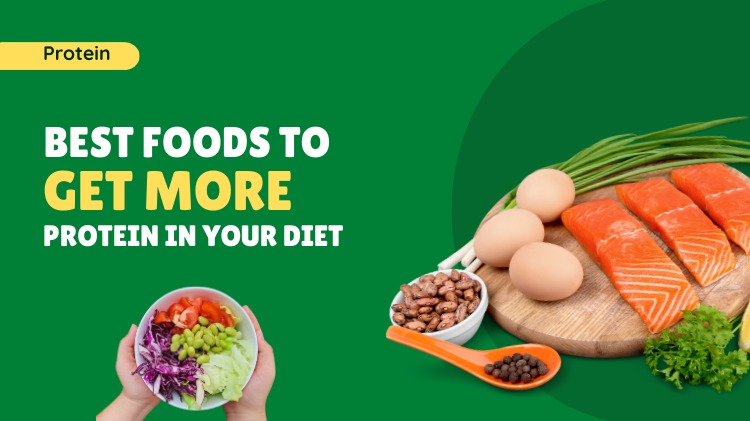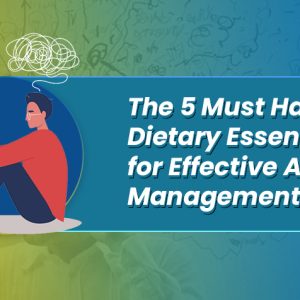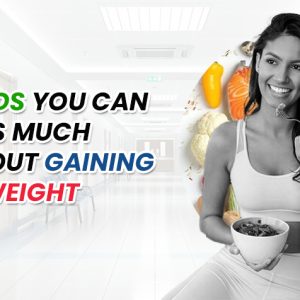The human body requires three essential macronutrients: fats, carbohydrates, and protein. However, only protein can build muscle and vital enzymes. Foods with high protein percentages make you feel full, which in turn regulates the extra calories that you consume without appetite. Getting more protein in your diet helps you in multiple ways. No wonder, protein supplements are the most sought-after dietary products.
You can regulate your carbs and fat intake but protein is indispensable. Having a protein-rich diet is a must for all body types. Therefore, you should start monitoring what you consume.
In this article, we will discuss the best foods to get more protein in your diet. We have prepared a list of high-protein foods from all major categories: non-vegetarian, dairy, and plant-based protein sources.
Let’s get started.
1: Non-vegetarian Protein Rich Foods
Non-vegetarian food is considered to be the best protein source out there. In fact, most people started consuming chicken and eggs to make up for their protein requirements.
Eggs
The egg is one of the most popular protein sources. Even some vegetarians make an exception for farm eggs as they are cheap, light, and easy to cook. Also, there are so many ways to cook an egg. You can have them boiled, fried or scrambled. Either way, it holds true to its nutritional value.
An egg holds around 6g of protein and egg white contains more than half of its protein composition. Since egg yolk holds more fat than protein, you can remove the yolk and still gain most of its protein without consuming any extra fat.
Chicken
If you need some healthy protein and you are open to non-vegetarian food options, go for chicken breasts. Although chicken is food for taste-craving consumers, it holds around 30% healthy protein. Surprisingly, people are fueling themselves with some high-quality protein while attending to their cravings.
Fish
Fish is one of the healthiest protein sources out there. It not only fulfills your protein requirements, but also aids your vision, nerves, and brain function. Before adding fish to your diet, you should consider the available options. There are so many types of fish out there. Tuna and Salmon hold the highest protein content. You can also go for prawns and shrimp.
2: Protein-rich Dairy Products
Dairy products are not the primary source of protein in our diet. However, they can contribute to your daily protein requirement. Make sure that you choose dairy foods with high protein percentages to trim down the calories consumed from carbs and fats.
Milk
When it comes to dairy products, a certain amount of fermentation is required to bring out their true protein content. However, milk in its true form contains lactose, which dilutes its protein value. Despite all this, milk provides a fair amount of protein. Whole milk offers around 20% of its calories from protein. You can also go for high-protein, low-carb milk but its availability can be a concern.
Cottage Cheese
Normal cheese is not a suitable protein food as it is high in fat. However, cottage cheese is an exception. Cottage cheese boasts one of the highest protein percentages among dairy products. Even its regular(4%) fat variant offers around 47% protein percentage. This number can go as high as 69% when you choose the non-fat(0%) cottage cheese. As a vegetarian, you can enjoy cottage cheese in many recipes without losing its protein value.
Greek Yogurt
Plain yogurt is already high in protein and low in carbs. Straining it further to remove even more lactose turns it into a higher protein-concentrated food called Greek yogurt. Greek yogurt is another high-protein dairy product that you can include in your diet. If you are not planning on losing weight, you can go for any type of Greek yogurt. However, you should stay clear of any added sugar. It decreases its protein percentage.
Read Also: 7 Foods You Can Eat As Much Without Gaining Any Weight
3: Plant-based Protein-Rich Foods
A plant-based or vegetarian diet can also provide all the nutritional requirements for all age groups. Also, it saves you from high cholesterol and blood pressure levels, which are common in non-vegetarian eaters.
Soy
In a vegan diet, soy products are among the richest protein sources. Although, the protein percentage may vary from product to product. There are 3 main soy products available in the market: tofu, tempeh, and edamame. Tempeh offers the highest protein percentage but tofu is the most popular food choice because it resembles meat and versatile flavor. Served as a meat substitute, tofu doesn’t only offer its texture but also its nutritional value.
Lentils
Lentils are edible legumes that you can add to your diet. They are rich in protein and other key nutrients like fiber, iron, and potassium. In a half-cup serving, lentils can offer up to 9 g of protein. In the Indian region, some of the highest protein lentils go by the name of Urad dal, chana dal, toor dal, moong dal, etc.
Nuts
Dry fruits like almonds, walnuts, and pistachios are rich in protein. Not only protein, but dry fruits are also a dense nutritional source offering vitamin A, iron, and magnesium. Also, consuming nuts doesn’t require an over-the-top preparation. You can snack on them while watching a movie and they will still provide you with high-quality protein.
Beans
Beans like fava beans, kidney beans, chickpeas, and soybeans are great sources of fiber and protein. They are one of the best protein-rich foods to incorporate into your diet. Their high fiber value helps with digestion and promotes gut health.
Sprouts
Sprouted legumes are a popular food choice for people seeking protein in a vegan diet. Sprouted legumes are protein-rich and easier to digest. Also, you can get a variety of nutrients by consuming different sprouts every day. Moong and chana sprouts are very popular among Indian consumers. You can also go for chickpea sprouts as they contain the highest protein content.
Peanut Butter
This might sound a little off the category of “plant-based foods” but technically, peanut butter falls in the category of plant-based food. Even though it is processed in a factory, all of its ingredients are acquired directly from plants.
Peanut butter is a popular choice for people who are always on the run. Peanut butter can turn anything into a protein-rich snack. Prepare a sandwich, blend it in your banana smoothie, add it to your oatmeal, or just take a spoonful, you can have peanut butter any way you want. Just beware of its high-fat percentage.
4: Protein Supplements
If you look back in time, protein supplements were only meant for bodybuilders or athletes. Today, people are moving towards artificial protein sources to make up for the lost nutrition. As a result, nutrition brands complied with the public demand and formulated suitable protein supplements for every taste preference and dietary restriction.
Protein powders or bars should not be your primary source of protein but you can include them in your diet as a secondary protein source to fulfill the protein requirement. Choosing the right protein is the key. Go for the protein type that suits your lifestyle and body expectations.
Conclusion
Protein is the building block of the human body. It assists in the formation of bones, muscles, and cartilage. Even hair and nails are comprised mostly of protein. In addition to that, it repairs tissue, oxygenates our body, aids in digestion, and promotes healthy hormone regulation. All in all, protein is an indispensable nutrient. However, you need to consume the right amount of protein to avail all the bodily functions carried on by protein.
An average adult requires 0.8 grams of protein per kilogram of body weight. And if you calculate the protein in your regular diet, you will realize that you are far behind your body requirements. Therefore, it is high time to rewire your eating habits and add some protein-rich foods to your diet.




